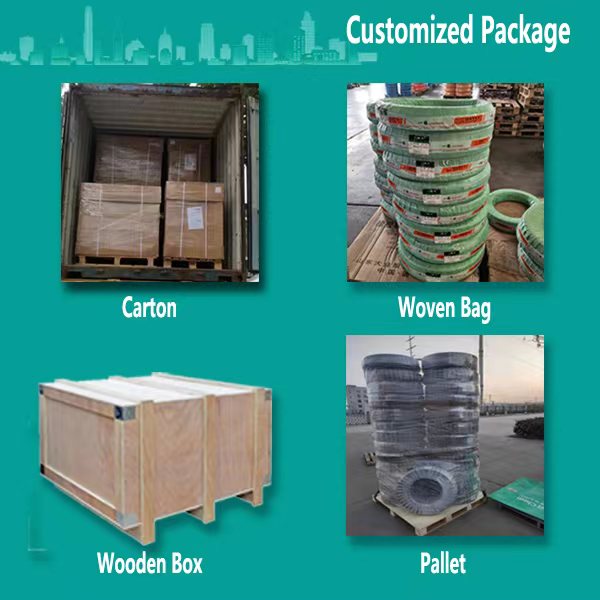335345435
Dec . 07, 2024 10:16 Back to list
oem sae100r14
Understanding OEM SAE 100R14 A Comprehensive Overview
In the world of hydraulic hoses, SAE standards define many qualities and specifications crucial for ensuring safety, reliability, and performance. Among these standards, the SAE 100R14 specification stands out as a vital requirement for hoses designed to handle challenging environments and fluids. This article will delve into the SAE 100R14 specification, particularly focusing on its OEM (Original Equipment Manufacturer) implications.
What is SAE 100R14?
The SAE 100R14 specification pertains to hoses specifically designed for high-pressure applications, which may involve the transportation of hydraulic fluids and various other substances. The SAE (Society of Automotive Engineers) standard outlines specific criteria regarding hose construction, materials, and performance metrics.
SAE 100R14 hoses are primarily constructed with Teflon, known for its exceptional resistance to heat and chemical corrosion, making it an ideal choice for transferring hydraulic fluids that may contain aggressive chemicals or operate in high-temperature situations. This specification effectively outlines the requirements for two types of hoses PTFE (Polytetrafluoroethylene) hose and the reinforced types capable of withstanding higher pressures.
Key Characteristics of SAE 100R14 Hoses
1. Material Composition The core of SAE 100R14 hoses is made of PTFE, which provides excellent chemical resistance and a low coefficient of friction. This unique combination ensures that hoses are less prone to kinking, hoisting, or rupture when transmitting fluids under high pressure.
2. Pressure Ratings Depending on the hose diameter and construction, SAE 100R14 hoses can typically handle pressures up to 1,500 psi (pounds per square inch). This makes these hoses suitable for various high-pressure applications across multiple industries, including aerospace, automotive, and chemical processing.
3. Temperature Range SAE 100R14 hoses can operate efficiently over a wide temperature range, typically from -65°F to +450°F (-54°C to +232°C). This versatility is critical for systems where temperature fluctuations might occur, enabling the hose to maintain performance without degrading.
4. Flexibility The construction of SAE 100R14 hoses allows for remarkable flexibility, making them ideal for applications where space is a constraint. Their flexibility ensures they can be routed in various configurations without inducing stress that could lead to hose failure.
oem sae100r14

5. Connections and End Fittings OEMs often require specific end fittings compatible with SAE 100R14 hoses. These fittings ensure a secure connection to the fluidic systems they integrate with, reducing the risk of leaks and ensuring optimal performance.
OEM Considerations
When discussing OEM applications of SAE 100R14 hoses, several factors come into play
- Compliance with Standards OEMs must ensure that the hoses they source and use meet the SAE 100R14 specifications. This compliance is critical not only for performance but also for safety and regulatory purposes, especially in industries like automotive and aerospace.
- Customization Many OEMs require hoses tailored to their equipment specifications. This customization might involve particular lengths, diameters, or end fittings that precisely fit their systems.
- Quality Assurance OEMs often have strict quality standards. It is vital for them to partner with reliable manufacturers who can guarantee that their hoses are produced consistently to SAE standards.
- Logistics and Supply Chain Managing logistics effectively is crucial for OEMs. Ensuring timely delivery of quality SAE 100R14 hoses can impact production schedules, and therefore, maintaining a robust supply chain is essential.
- Cost-Effectiveness While sourcing hoses that meet stringent specifications, OEMs also consider cost-effectiveness. They seek to strike a balance between quality and cost to maintain competitiveness in the market.
Conclusion
In summary, the SAE 100R14 specification plays a vital role in the manufacturing and application of high-performance hydraulic hoses. For OEMs, understanding the specifications and ensuring compliance can significantly influence product performance, safety, and efficiency. As technological advancements continue in the field of materials and manufacturing processes, the importance of standards like SAE 100R14 will only grow, ensuring that machinery and equipment operate optimally in some of the most demanding environments. Manufacturers and OEMs alike must remain vigilant in terms of quality and performance, embracing innovation while adhering to trusted standards.
-
SAE 100 R17 Black Smooth Cover Hydraulic Hose
NewsMar.07,2025
-
SAE 100 R17 Black Smooth Cover Hydraulic Hose
NewsMar.07,2025
-
SAE 100 R17 Black Smooth Cover Hydraulic Hose
NewsMar.07,2025
-
SAE 100 R17 Black Smooth Cover Hydraulic Hose
NewsMar.07,2025
-
SAE 100 R17 Black Smooth Cover Hydraulic Hose
NewsMar.07,2025
-
steel wire braided hydraulic hose
NewsMar.07,2025



